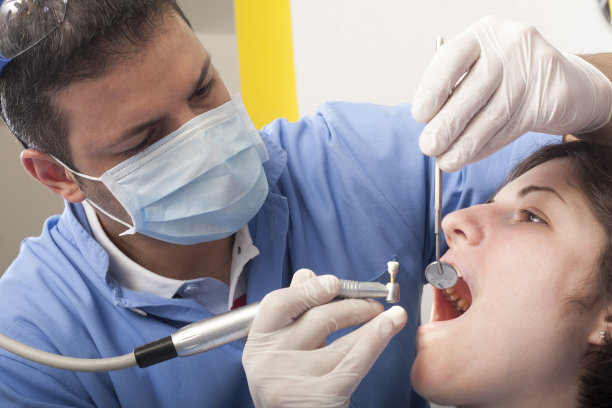The Essential Guide to Understanding the Process and Care Involved in Extracting a Tooth Safely
Summary: Extracting a tooth is a procedure that can evoke anxiety and uncertainty for many patients. This article serves as an essential guide to help readers understand the comprehensive process and care steps involved in safely extracting a tooth. We will delve into the preparation needed before the extraction, the procedure itself, post-extraction care, and when to seek emergency assistance. With clear explanations and tips, this guide aims to demystify tooth extraction, ensuring that both patients and caregivers are well-informed about what to expect throughout the process.
1. Preparation Before Extracting a Tooth

Before any tooth extraction, proper preparation is essential to ensure both safety and comfort for the patient. The dental professional will typically begin with a thorough examination, which includes reviewing the patients medical history. This step is crucial in identifying any underlying health issues that may complicate the procedure. It also allows the dentist to understand any allergies to anesthesia or other medications.
Next, imaging techniques, such as X-rays, may be employed to visualize the tooth’s roots and surrounding bone structure. This imaging provides the dentist with vital information about the tooths condition and its relationship with adjacent structures, enabling them to strategize the extraction process accurately. In some cases, if the tooth is impacted or if there are other complications, a specialized surgical approach might be necessary.
Finally, educating the patient about the process and addressing any questions or concerns is a key component of preparation. This conversation allows patients to mentally prepare for the extraction and eases any anxiety they may feel. Additionally, patients should receive pre-operative instructions, such as dietary restrictions or guidelines regarding medication usage before the procedure.
2. The Tooth Extraction Procedure Explained
The extraction procedure typically begins with the administration of anesthesia to ensure the patient remains comfortable and pain-free throughout the process. Local anesthesia is most commonly used for simple extractions, while sedation or general anesthesia may be required for more complex cases. The choice of anesthesia will depend on the tooth’s condition and the patient’s anxiety levels.
Once the anesthesia takes effect, the dentist will proceed with the extraction. For a straightforward extraction, the dentist will loosen the tooth using specialized instruments and, if necessary, gently rock it back and forth until it can be removed. If the tooth is impacted or has deep roots, surgical extraction techniques will be utilized, which may involve making a small incision in the gum to access the tooth.
Throughout the procedure, the dental team stays attentive, monitoring the patient’s comfort levels and taking necessary measures to minimize any discomfort. After successfully removing the tooth, the dentist will ensure that any bleeding is controlled and may place sutures if required. Proper care during the procedure is essential for both immediate success and long-term healing.
3. Post-Extraction Care for Patients
Post-extraction care is crucial for ensuring a smooth recovery. After the anesthesia wears off, patients may experience some discomfort, which can be managed with prescribed or over-the-counter pain relief medication. Ice packs can also be applied externally to reduce swelling in the initial 24 hours following the extraction.
Patients should be given clear instructions on what to eat and drink after the procedure. Soft foods are recommended in the initial days, avoiding hot, spicy, or hard foods that can irritate the extraction site. Hydration is important, but patients should avoid using straws, which can create suction and dislodge the blood clot essential for healing.
Monitoring the extraction site for signs of infection, such as increased pain, swelling, or discharge, is critical. Patients should be educated about what to expect during the healing process and when to follow up with the dentist. Seeking prompt attention for any unusual symptoms can prevent complications and ensure a healthy recovery.
4. When to Seek Emergency Assistance
While most tooth extractions heal without complications, there are particular signs that warrant immediate attention. Excessive bleeding that does not subside after a few minutes or continues to worsen can indicate a serious issue. In such cases, patients should contact their dentist or head to an emergency room.
Additionally, if a patient experiences severe pain that does not respond to prescribed pain relievers, this could indicate a potential infection or other complications. Swelling that persists beyond the first few days or spreads to other areas, such as the face or neck, should also be addressed immediately.
Finally, a fever accompanying any of these symptoms can be a red flag signaling infection. Patients must be proactive and vigilant about their recovery. They should never hesitate to seek medical help if they are concerned or uncertain about their healing process.
Summary:
Tooth extraction, while commonly performed, requires a well-understood process and appropriate preparative steps. From pre-operative assessments to emergency situations post-surgery, awareness and education play significant roles in ensuring the safety and well-being of patients. With proper care and vigilance, the journey of tooth extraction can be a smooth experience for everyone involved.
This article is compiled by Vickong Dental and the content is for reference only.


